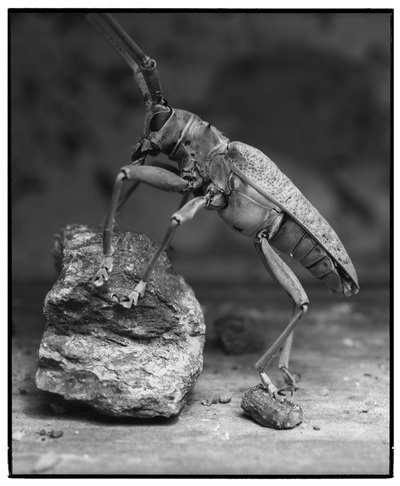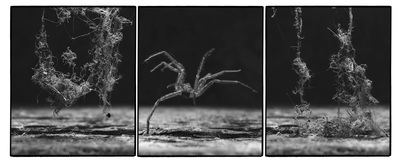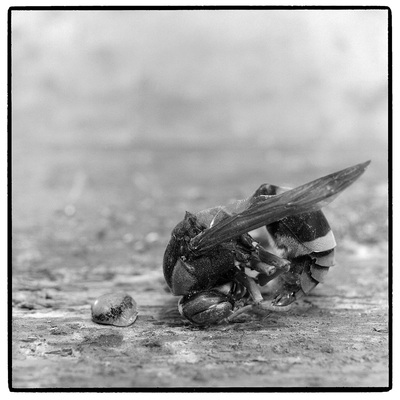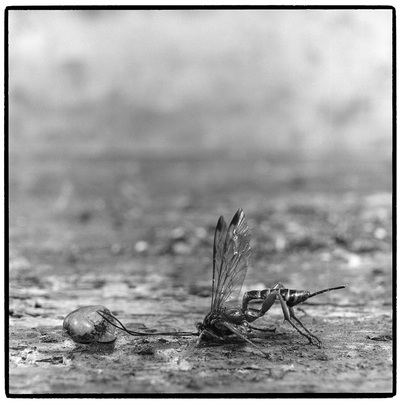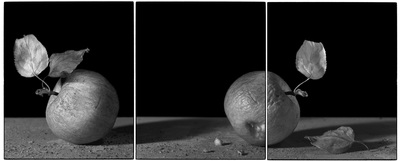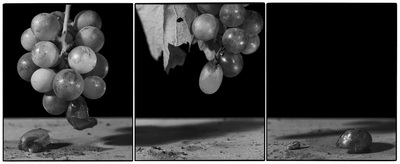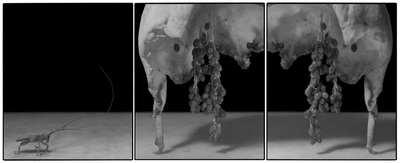|
Rhopography 1999- 2003 Rhopography refers to the Greek word rhopos, meaning trivial objects, small wares, trifles. This old fashioned term for still life painting is the title for a series of images, which depicts dead insects and food left and references the tradition of the Baroque still life. Instead of using digital technology, the photographs in this series are manipulated through traditional ‘analogue’ processes. Although the pictures show a scenario that does not exist in reality, their language stays strictly within the tradition of documentary photography that signifies truth, including sharp focus and the black border around each print. Informed viewers these days expect to be fooled by digital images, but can be taken off-guard when deception is presented in ‘old fashioned’ black/white photography. Historically painting in the 17th Century was at a similar crossroads as photography is in the digital age. Baroque still lifes developed a naturalism that challenged preconceived ideas about painting and marked the beginning of ‘photographic thinking’. The use of optical tools, and the suppression of all painterly gesture, led to seemingly truthful depictions, which nevertheless were highly subjective constructions of, and reflections on, society and religion. Aspects of this tradition still influenced artists who accompanied the early European explorers since the 17th Century to record the ‘newly found’ coastlines, cultures and species of fauna and flora. These records were regarded as scientific and objective accounts but were nevertheless subjective reactions to unknown territories. While the first phase of Rhopography focused on the depiction of dead insects and referenced Dutch still life painting, the second phase is based on the Spanish still life tradition. It particularly refers to the monk and painter Juan Sánchez Cotán and his images of fruit and vegetable in the coolhouse. Inspired by Cotán’s sense of geometry the images develop a new way of mirroring objects without interrupting the directional light on the stage. While insects only occasionally appear in the images, they still have a strong presence as if they just walked out of the picture. Cotán’s monastic ideas of discipline and preservation are still palpable but have failed a long time ago and the coolhouse is left to decay and unseen scavengers. |












